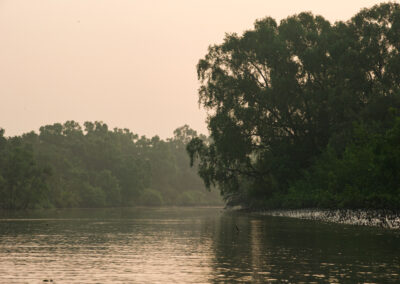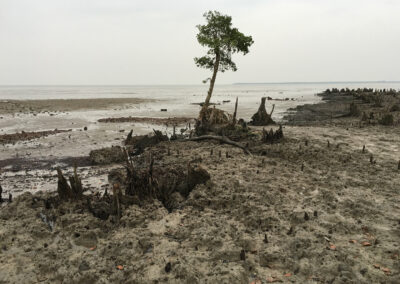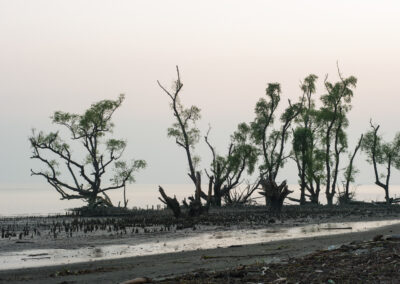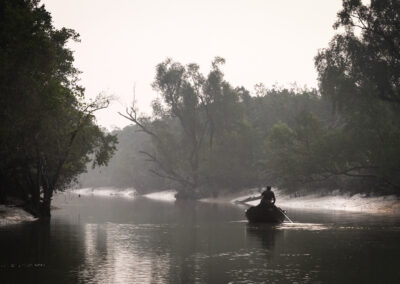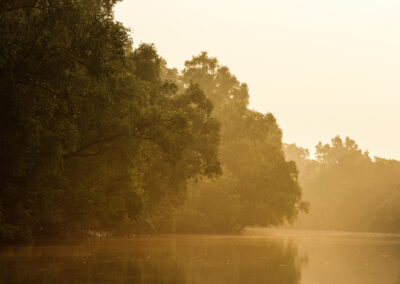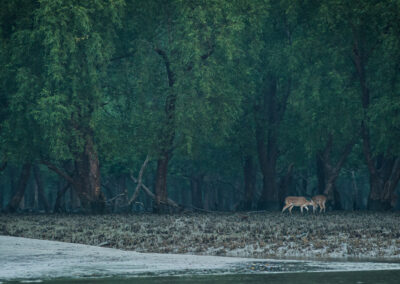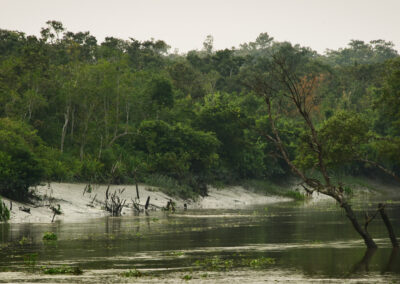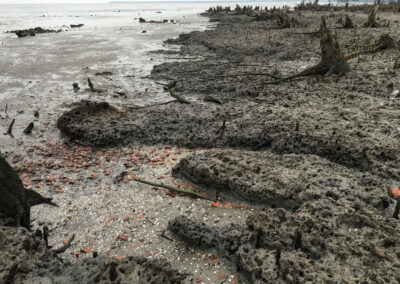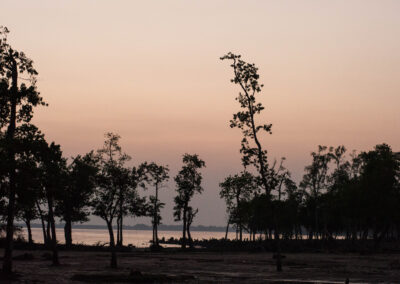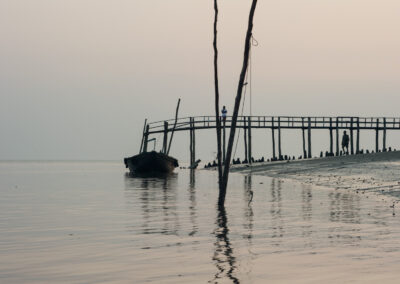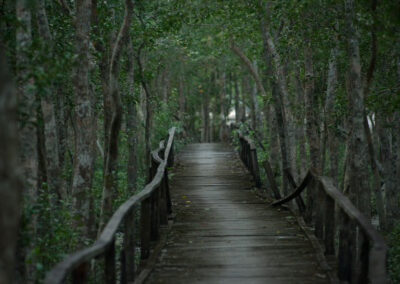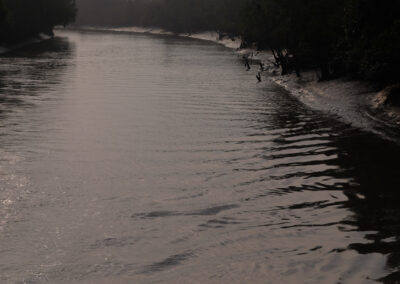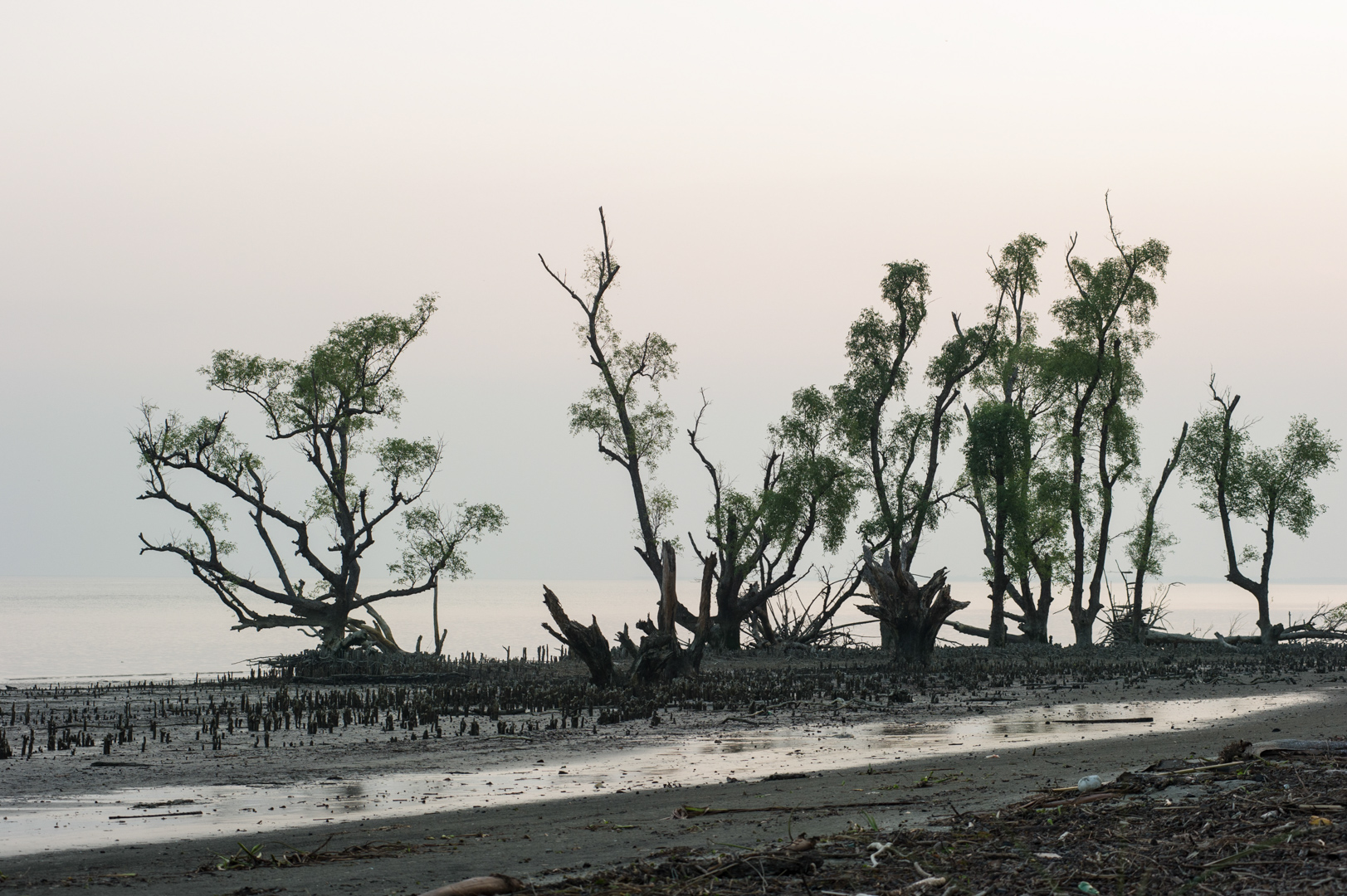
‘Living with the tides – the Sundarbans’ is a multi-layer book project. I had been always viscerally influenced by the Sundarbans, its mysteries, and splendors. Sundarbans is the world’s largest contiguous mangrove ecosystem shared by Bangladesh and India in the Ganges Delta. After several trips and passage of long times, my fascination for the Sundarbans has only grown stronger.
There is something inexplicably awe-inspiring about these deep mangrove swamps… like they exist in a time before the advent of man. The physical experience of going by the maze of rivers and creeks puts one in a different world. The mangrove’s secretive splendor unfolds serene wilderness, constantly changing variations of green and moods. The unusual aerial root structures, well-adapted in water, mud, and bark. The eerie and captivating sensation that time has slowed down and that the forest and everything within it exists in a different state. To enter this other place is to accept a slowing of time and a shift in perception. The comforting throb of boat engines gives a lulling effect as minutes turn to hours, then days. Yet, surprises keep jumping out from muddy shores that literally crawl with life.

The tides rise and fall periodically inundating all of the land. Mangroves are trees that are adapted to living in brackish water. Different tree species are found in different parts of the Sundarbans, adapted to different levels of saltiness. An incredible, resilient network of roots supports the mangrove forests and protects its islands from disastrous waves, tides, and cyclones; the mangroves’ intricate root system is central to the stability of this habitat. They are meadows of brilliant green induced by monsoon rains. People are intimately connected with this unique habitat and there are a variety of animals including the protected Royal Bengal Tigers, estuarine crocodiles, spotted deer, wild boar, Gangetic Dolphins, and several species of birds and snakes.
In the early mornings and at dusk, the is more like a fog or a mist, creeping in slowly, from a distance, wrapping itself around certain sounds while revealing others: the slow moves of a boat, the cackle of a heron, flapping of the wild geese, moving of a reptile, or falling of the mangrove leaves like whispers. The first person you fall in love with will be a spotted deer. Life goes on by the shores and the riverbanks.
I am keenly aware that climate change and human interference have imperiled much of the Sundarbans. The forest we love is slowly dying, if not in our lifetime, then in the next. It is reaching the ‘tipping point’ where further damage by humans could push the ecosystem into an ecological tailspin, from which its co-inhabitants may never recover.
But nature has the power to repair and renew all… if we allow it to. That is the foundation for all of us to make the joint resolve to work for the protection of the Sundarbans inheritance.
A selection of the images from the series are shown below (click to view image at full size / original format).
ABOUT LAILA NAHAR
I am a lens-based artist and book-maker currently based in California, USA. I have lived my life in stark cultural contrast. Born and brought up in Bangladesh and eventually migrated to the US in my late 20’s in 1995. I have had this inevitable fascination for photography since my childhood. I can’t say with certainty when I picked up the first camera and captured my first story, it was some 30+ years back.
I started out as a black and white film photographer putting together my own darkroom and doing my own printmaking. Later I moved to digital and in the recent past have been fascinated by book making. I had taken photojournalism and darkroom classes at the University of Dhaka in Bangladesh. Once migrating to the USA, I took documentary classes with Eugene Richards, Frank Espada, Amy Arbus, Keith Carter. Lately, I have become increasingly fascinated with hand-made photo book making and attended workshops with Elizabeth Avedon, Void Impromptu, ‘Self Publish Be Happy’ and with the Center of Book Arts in NYC.
I have had solo exhibitions from ‘Memories from Bangladesh’ series in Steps Gallery (Arizona) and Nelson Gallery (California). Photographs from the same series are in permanent collections of ASU and UC Davis Art photography Museums. My recent project ‘I Have Been Here Before’ – a hand-made photo book has been selected for the ‘12th Annual Self-Published PhotoBook Show’ in Davis Orton Gallery and Griffin Museum of Photography (Nov-Jan 2022).
Website: lailanaharphotos.com
Instagram: @naharlaila
CREDITS
Unless otherwise stated, all words and images in this article are © Laila Nahar

